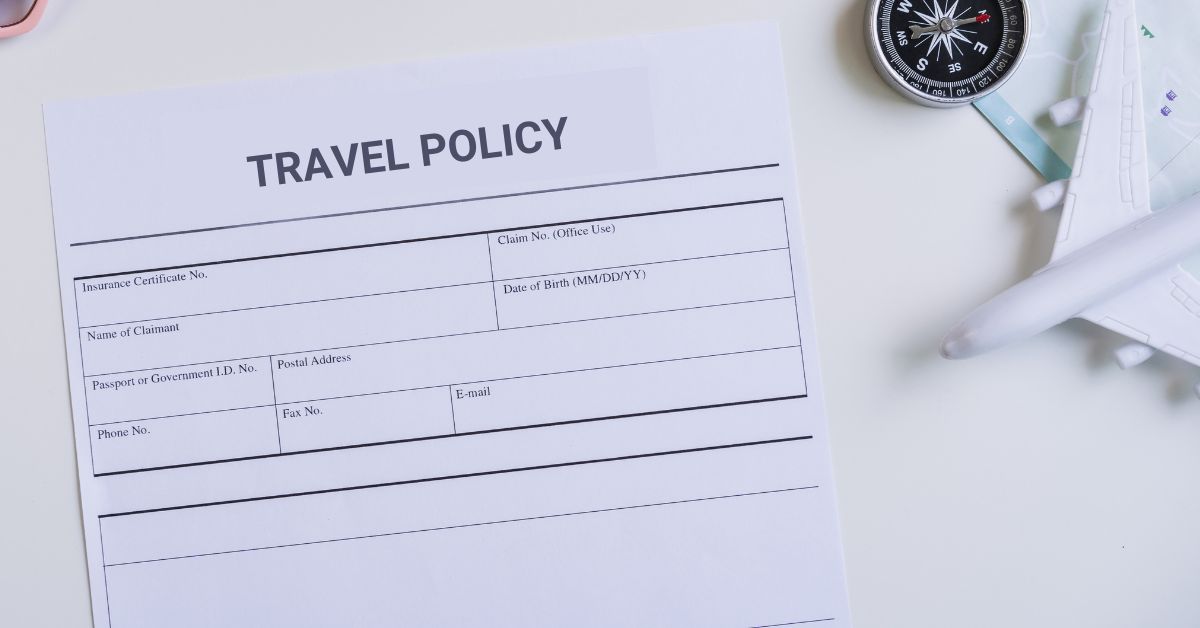
Creating an executive travel policy is critical to efficient corporate travel management, ensuring senior leaders have seamless, comfortable, and productive trips. However, even the most well-intentioned policies can fall short due to common oversights, leading to unnecessary costs, dissatisfaction, and compliance issues. Executives often require unique accommodations, flexibility, and support, making it vital to craft policies tailored to their needs while aligning with the organization’s goals.
Mistakes such as vague guidelines, ignoring executives’ preferences, or overlooking cost-effectiveness can disrupt their experience and negatively impact business outcomes. Additionally, failing to leverage modern technology or neglecting data-driven insights may lead to inefficiencies and missed opportunities for optimization.
In this blog, we’ll delve into the most common pitfalls to avoid when designing an executive travel policy. By addressing these challenges head-on, you can create a policy that ensures smooth journeys and maximum value for your leadership team and organization.
What is an Executive Travel Policy?
An executive travel policy is a set of guidelines and regulations designed specifically to manage and streamline travel arrangements for senior executives and high-ranking officials within an organization. These policies are tailored to meet the unique needs and preferences of executives, ensuring their travel experiences are seamless, efficient, and conducive to maintaining productivity.
Unlike standard corporate travel policies, executive travel policies often provide enhanced benefits and flexibility. They may include access to premium travel services such as business or first-class flights, luxury accommodations, and priority booking options. These privileges acknowledge the critical roles executives play in driving business success and aim to minimize travel-related stress.
An executive travel policy also emphasizes safety and convenience. It includes measures for secure transportation, travel insurance, and access to 24/7 support in case of emergencies. Additionally, these policies often integrate advanced technology, such as personalized booking tools, to cater to the busy schedules of executives.
Common Executive Travel Policy Mistakes You Must Avoid
Here are 6 common mistakes to avoid when drafting an executive travel policy:
1. Not Setting Clear Guidelines
The first crucial mistake most travel managers make while crafting a travel policy is not setting clear objectives. With clear and proper goals, it can be easier for C-level executives to understand the policy, leading to travel policy compliance.
Hence, while crafting an executive travel policy, you must set crisp and clear guidelines that align with your company’s goals. Setting clear goals helps provide transparency regarding the company’s expectations regarding executive travel, information on executives’ safety and security, reimbursable and non-reimbursable expenses, and more.
For instance, you should mention in the policy what airlines and hotels C-level executives are allowed to use, how much they can spend on their personal and client lunches, what leisure activities they can indulge in, etc. This way, executives will clearly know what they are allowed and not allowed to do on a business trip.
2. Neglecting Executives’ Preferences
Another major mistake companies and travel managers make is not incorporating executives’ preferences into the executive travel policy. While it’s important to stay within budget and follow guidelines, it’s also essential to take into account the individual preferences of executives who will be traveling.
These choices can greatly influence their travel experience and, in turn, their productivity during business trips. This may involve factors like favored airlines, preferred hotel brands, and particular amenities or services they need.
Neglecting these preferences can result in executives being dissatisfied or stressed, which in turn leads to low productivity. You can avoid this mistake by understanding executives’ previous travel preferences. For instance, if most of your C-level executives have traveled earlier by Southwest Airlines or American Airlines, or some of them stayed in hotels with healthy breakfast options or gym facilities, you should include them in your policy. By considering executives’ preferences, you can ensure that they have a seamless travel experience.
3. Overlooking Duty of Care
The number of employees traveling for work purposes, including executives, has increased post-pandemic. Therefore, travel managers must ensure the safety and security of their employees.
Moreover, companies also have a legal obligation of duty of care towards their employees. Overlooking executives’ duty of care can land employees in deep trouble, which will impact your company and your business goals.
A comprehensive executive travel policy should include measures that address duty of care concerns. For example, the policy should require executives to attend pre-travel briefings that provide information on potential risks, such as health concerns, political instability, civil unrest, weather conditions, etc., in the destination country. The policy should include guidelines on how they can access business travel support in times of emergency.
The executive travel policy should also require employees to have adequate travel insurance coverage. The insurance should cover expenses for medical emergencies, emergency evacuation, flight cancellations, loss of luggage, etc.
4. Ignoring Cost Control
Corporate travel can incur significant costs, particularly when executives are involved, as their preferences often necessitate a larger budget. While it’s essential to offer executives comfortable and convenient travel options, it’s equally important to keep the company’s travel budget in mind. If travel managers do not establish clear guidelines regarding travel expenses, executives’ travel costs may quickly escalate beyond expectations, potentially resulting in financial strain for the organization.
Hence, the executive travel policy should include guidelines encouraging executives to make cost-effective choices, such as booking travel in advance, using preferred vendors, leveraging business travel discounts, etc.
You should provide clear guidelines for executives on controlling costs. This way, they can minimize unnecessary expenses and ensure that travel costs align with the company’s travel budget. This will help in improving the company’s financial health, and you can utilize the saved amount for other areas of the organization. With travel costs under control, you can ensure better policy compliance.
Suggested Read:
How to Achieve Corporate Travel Policy Compliance?
5. Having a Strict Travel Policy
Another grave mistake most travel managers/ company owners make is enforcing a strict travel policy. While it is essential to ensure policy compliance and cost reduction, having a strict policy in place can ruin many things for executives.
It can limit the flexibility that executives need to manage their schedules effectively. If forced to adhere to a rigid set of guidelines, they may feel stressed to constantly monitor their travel arrangements and ensure they comply with the policy. Ultimately, this can lead to decreased job satisfaction and reduced productivity.
Therefore, you must draft a flexible travel policy for the executives. A flexible travel policy, unlike a strict travel policy, is designed to provide executives with a high degree of flexibility and autonomy when it comes to their travel arrangements.
6. Ignoring the Importance of Cultural Sensitivity
When C-level executives travel internationally, they often face cultural differences that can influence their business interactions. Culture encompasses elements like values, beliefs, language, and business etiquette. If your executive travel policy overlooks these cultural norms, it risks offending potential clients or stakeholders.
For example, imagine an executive traveling to the Middle East to finalize a critical contract. They extend a handshake to someone of the opposite gender as a greeting, unaware that this gesture may be considered inappropriate in that region.
Such situations can easily arise without proper guidance.Therefore, including cultural insights in your executive travel policy is essential. It not only fosters stronger business relationships but also enhances the efficiency of managing business travel.
Leverage a Robust Executive Travel Policy for Your Business
An effective executive travel policy is essential for ensuring executives travel efficiently, safely, and within budget. However, travel managers can commit some mistakes, such as failing to set clear objectives or not considering the needs of executives, which severely impact their business travel experience and business travel goals.
However, you can develop a robust executive travel policy by taking the help of a travel management company (TMC). A TMC such as itilite helps you prepare a robust executive travel policy according to your executives’ needs. We also provide 24/7/365 business travel support, help you maintain a flexible travel policy, and also help in cost reduction.
Get a free demo of itilite to know more about how we can help you get the most out of business travel management.













